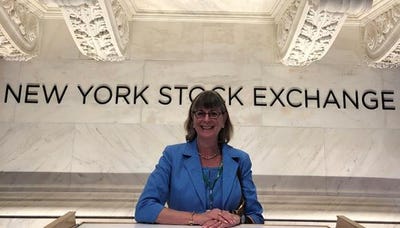- Waste Management Finance
- Residential Waste
- Waste Management Business
- Commodities Pricing
- Glass
- Commercial Waste
What We Learned from the Waste360 Recycling Summit
We attended the inaugural Waste360 Recycling Summit, which was held in Chicago Sept. 9-11. Here are our takeaways from the event, which featured a wealth of education sessions on the various issues facing the recycling business today. A substantial new Environmental Research and Education Foundation (EREF) report also was unveiled at the summit, which we intend to review in more detail when the full report is available.
Recycling Issues In a Nutshell
The recycling business is currently pinched in a two-handed vise grip. On one hand, the output–recycled commodities–is plagued by depressed prices worldwide, with slower growth in demand from China impacting recycled paper, steel and aluminum, while lower oil prices impact recycled plastics. The world is awash in a commodity supply glut.
On the other hand, recycling’s input–the waste stream–is plagued by higher processing costs, due to China’s Green Fence and the rapid growth in single-stream recycling, both of which have brought contamination issues in the recycled waste stream to the forefront.
Both sides are impacted by the “lightweighting” of the waste stream. Commodity sale values are impacted by falling amounts of paper and metals, while the increase in the variety of plastic packaging also increases the processing costs. The summit’s education sessions highlighted advice and experiences from industry participants in how to cope with these various issues.
Education Key to Bringing Down Contamination Levels
A number of summit presenters addressed the education issue. Customers, particularly residential customers, are confused about what can and can’t be recycled, and when in doubt, just place items in the single-stream recycling bin. As a result, it was cited a number of times that contamination levels in the incoming stream had doubled since the advent and growing popularity of single-stream recycling.
In community outreach and signage efforts (key to education), summit presenters stressed that less information is better than more. In other words, highlight the three or four items most desirable to be recycled and placed in the bins, and also note only the three or four that are the most deleterious to the waste stream (i.e. plastic bags).
It was also noted that generally a minority of people really consciously want to recycle, while the majority will do so only when it’s shown to be beneficial to them, or punitive if they don’t. In light of that, stickers or tags on the recycling carts letting homeowners know cart contents were unacceptable have proven very effective. (Particularly when the hauler then does not pick up the cart!) Several municipal speakers noted that this had successfully brought contamination back down to levels acceptable to haulers.
Despite the increased contamination issues, single-stream recycling appears here to stay, and its use is expected to continue to grow given its convenience. That convenience generates higher volumes, which help municipalities meet their recycling targets.
What to do About Glass
Glass remains problematic for the recycling industry, given its high transport costs, low output value and its ability to degrade the finished recycling bale and damage the recycling equipment. However, the oft-cited solutions, presorting or more and better equipment, can be nonstarters as the economics of glass recycling often do not support the higher expenses or capital expenditures.
That said, municipalities are loathe to abandon glass recycling as its weight contributes considerably to hitting recycling targets. Ironically, there does seem to be ample demand for clean cullet, and glass pricing has been relatively stable–it can be effectively recycled. Regional independent Rumpke’s solution was to put up their own processing plant to feed local fiberglass producers in Ohio.
United Front on Contract Changes
As there is nothing the recycling industry can do to change worldwide commodity prices, the focus has obviously been on changing contract terms and structures and enforcing contamination limits. Acceptable contamination levels were often already specified in existing contracts but not actively enforced. That is now changing, primarily with the use of tags and stickers as previously mentioned.
Also, as mentioned in prior Business Insights, recycling industry participants are attempting to shift contracts from being commodity based to processing service fee based–then adding a risk/profit sharing agreement based on commodity price levels. Casella Waste has instituted a sustainability/recycling adjustment (SRA) fee, which floats roughly in line with the commodity markets, similar to a fuel recovery fee.
It appears that these contract changes, though they will take some time to institute fully, are being pursued largely across the board by haulers and recyclers, at least more so than in past down cycles.
Waste Management has been willing to shutter capacity when it can’t get the changes it needs to get the contracts sufficiently profitable. This uniformity is largely due to the growing belief that there is no relief, or at least not material upside, in the outlook for recycled commodity prices in the foreseeable future.
Commodity Price Outlook
Despite the issues, the mandates and recycling/diversion goals just keep coming. It was noted that the diversion mandates and recycling targets are another factor in keeping a lid on recycled commodity price recovery–they result in involuntary generation of supply, thus keeping a floor under the supply, and so the market does not react to clear inventory as quickly. As a result, recycled commodity prices remain mired in the lower quartile of the historical pricing band.
China is now expected to bring on less recycled paper capacity than in the past, while also recovering more of its own supply, which also serves as a depressant. Although the longer term outlook for old corrugated cardboard (OCC) remains brighter due to packaging demand, and old newspaper pricing (ONP) should remain stable due to decreasing supply, mixed paper is in danger of serious oversupply, according to Summit presenters.
Higher Diversion Rates Drive Higher Costs per Household–A Fact Not Always Recognized
Although the percentages varied to some extent, several summit participants noted that of the total waste stream, 30 percent to 40 percent is traditional recyclables, with adequate current infrastructure, another 20 percent to 30 percent is organics, with spotty, insufficient infrastructure, another 10 percent is not recyclable with current technology (i.e. off-spec plastics) and 20 percent is simply not recyclable at all.
Given that, it was questioned whether 70 percent to 75 percent diversion goals are realistic.
And though controversial, it was noted that mixed waste processing may be necessary to hit those high diversion goals, given the cost of source-separated collection, particularly of organics. The bigger question may be–do consumers and customers know and realize what those high mandates cost?
During a Q&A session after one of the sessions, an industry participant from the Midwest noted that to achieve a roughly 40 percent recycling rate in his area, it was costing $17-$18 per month per household. The question was asked what San Francisco’s per household cost was with its much higher diversion rate. Although not confirmed, it was estimated that it may be as high as $100 per household!
Leone Young is the Principal of LTY ERC, LLC, providing consulting and research services to, and conducting special projects for, the environmental services industry, primarily the solid waste sector.
To subscribe to the monthly Waste360 Business Insights newsletter, go here.
About the Author
You May Also Like




